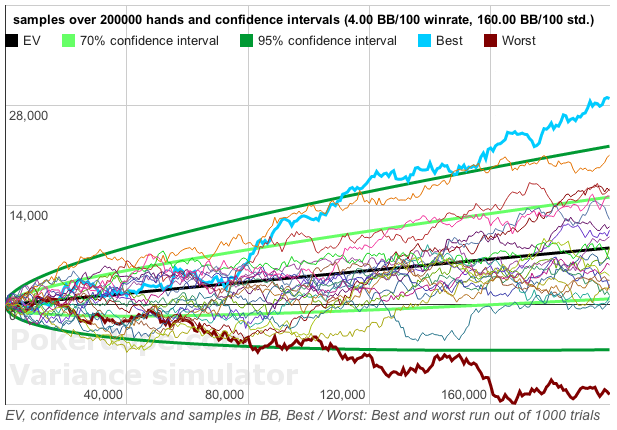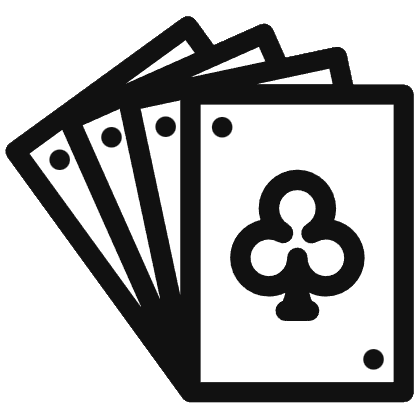BelFish
Legend
Loyaler
I think that most players already know that winnings (or losses) in poker are described by a normal distribution. In the drawings, this is usually depicted as a "bell" of the distribution. Not only poker, but also many other processes, phenomena and characteristics of something in real life are subject to this distribution.

For clarity, we will assume that this picture describes the length of something )))
And for a large number of measurements, this length is on average around the world equal to 14 centimeters with a standard deviation of 2 centimeters (corresponding to a variance of 4 cm^2).
Then deviation within ±sigma will be performed for 68% of measurements, and deviation within ±2sigma will be performed for 95% of measurements. This means that if 100 random measurements are taken, only about 2.5% of the measurements will give a length of less than 10 cm, and about 2.5% will give a length of more than 18 cm.
Here is a picture built for these scales (expected value = 14 and sigma = 2):

Now consider the same for poker at the correct scale. To do this, let's take for example a player with a win rate of 14BB/100. As we know from practice, the average sigma for most players is 100bb/100 (in poker trackers, this indicator is denoted by std.dev).
I have drawn in red on the same picture how the "bell" of the distribution will look for the given scales (expected value = 14 and sigma = 100).
In fact, this red line will lie even lower, i.e. will be almost smeared along the x-axis. The area under both lines (red and black) should be the same and equal to one. And for the red line, i.e. in the case of poker, the probability of getting close to 14BB/100 in 100 hands will be very small. We have a very high probability (~32%) that in 100 hands played, we will get the result from losing more than (-86BB) to winning more than 114BB. While for the black line, the measurement results will always be close to the value = 14.
This is a visual representation of the impact of how large the variance in poker is compared to other aspects of life.
-------------
But if we play for a very long time, then this red line will shrink and move away from the X axis, until, with a certain number of hands played, it becomes similar to a black line in scale. Later I will probably calculate what the approximate playing distance should be for this.

For clarity, we will assume that this picture describes the length of something )))
And for a large number of measurements, this length is on average around the world equal to 14 centimeters with a standard deviation of 2 centimeters (corresponding to a variance of 4 cm^2).
Then deviation within ±sigma will be performed for 68% of measurements, and deviation within ±2sigma will be performed for 95% of measurements. This means that if 100 random measurements are taken, only about 2.5% of the measurements will give a length of less than 10 cm, and about 2.5% will give a length of more than 18 cm.
Here is a picture built for these scales (expected value = 14 and sigma = 2):

Now consider the same for poker at the correct scale. To do this, let's take for example a player with a win rate of 14BB/100. As we know from practice, the average sigma for most players is 100bb/100 (in poker trackers, this indicator is denoted by std.dev).
I have drawn in red on the same picture how the "bell" of the distribution will look for the given scales (expected value = 14 and sigma = 100).
In fact, this red line will lie even lower, i.e. will be almost smeared along the x-axis. The area under both lines (red and black) should be the same and equal to one. And for the red line, i.e. in the case of poker, the probability of getting close to 14BB/100 in 100 hands will be very small. We have a very high probability (~32%) that in 100 hands played, we will get the result from losing more than (-86BB) to winning more than 114BB. While for the black line, the measurement results will always be close to the value = 14.
This is a visual representation of the impact of how large the variance in poker is compared to other aspects of life.
-------------
But if we play for a very long time, then this red line will shrink and move away from the X axis, until, with a certain number of hands played, it becomes similar to a black line in scale. Later I will probably calculate what the approximate playing distance should be for this.
















